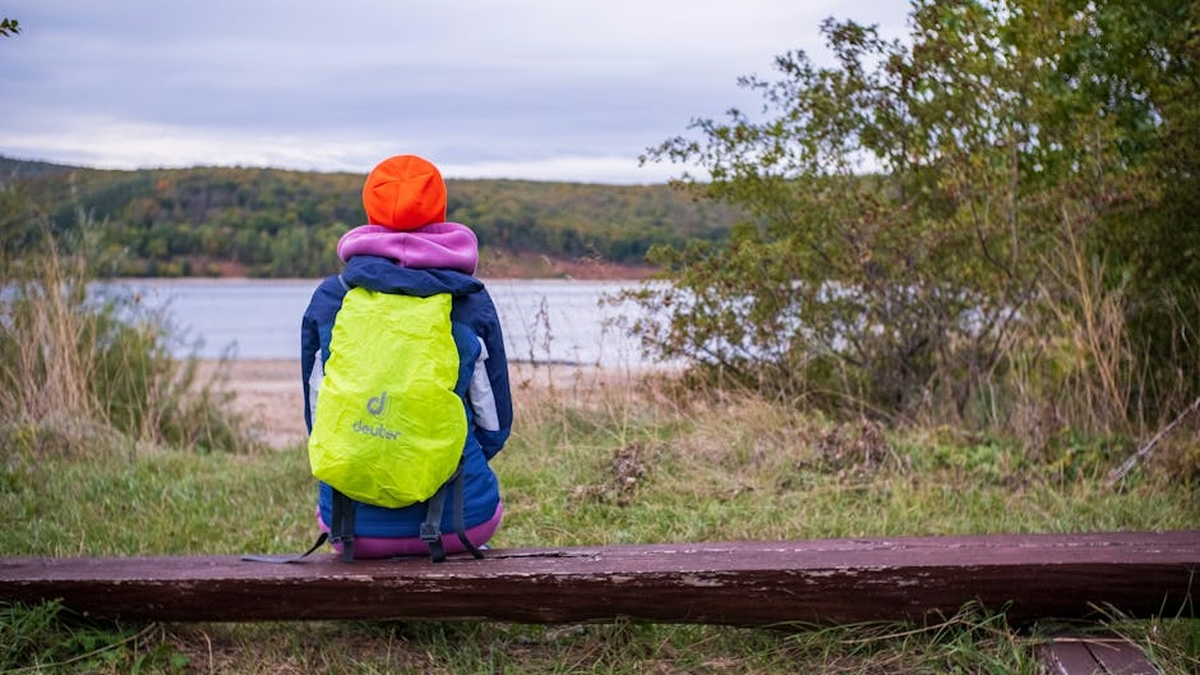Fall Hiking Safety: 2025 Tips
Embrace the Beauty: Your Guide to Fall Hiking and Trail Running Safety in 2025
As the leaves transform into a vibrant tapestry of reds, oranges, and yellows, fall offers an unparalleled opportunity for outdoor adventures. Fall Hiking and Fall trail running safety become paramount as you venture into the wilderness to witness nature’s breathtaking spectacle. However, the changing season also presents unique challenges that require careful planning and preparation. This comprehensive guide provides essential Hiking safety tips 2025 to ensure your fall foliage fitness journey is both enjoyable and safe.
Essential Gear for Autumn Adventures
Having the right gear can make or break your Fall Hiking experience. The unpredictable weather and changing terrain demand careful consideration when packing your backpack. Here’s a breakdown of essential items:
Clothing Layers
The key to staying comfortable during Fall Hiking is layering. Start with a moisture-wicking base layer, add an insulating mid-layer (fleece or down), and top it off with a waterproof and windproof outer shell. This system allows you to adjust to fluctuating temperatures.
- Base Layer: Moisture-wicking materials like merino wool or synthetic fabrics.
- Mid-Layer: Fleece or down jacket for insulation.
- Outer Layer: Waterproof and windproof jacket and pants.
Footwear
Sturdy hiking boots with good ankle support are crucial for navigating uneven trails. Consider waterproof boots to protect your feet from wet conditions. For Fall trail running safety, trail running shoes with aggressive tread are essential.
Navigation Tools
Don’t rely solely on your phone. Carry a map, compass, and GPS device. Learn how to use them before you head out. Knowing how to navigate independently is a vital Hiking safety tip 2025.
Other Essentials
- Headlamp or flashlight with extra batteries
- First-aid kit
- Navigation tools (map, compass, GPS)
- Water bottles or hydration pack
- High-energy snacks (trail mix, energy bars)
- Sunscreen and sunglasses
- Insect repellent
- Knife or multi-tool
- Whistle
- Fire starter
- Emergency blanket
Staying Safe on the Trails: Precautions and Best Practices
Safe Fall Hiking requires more than just the right gear. It involves understanding the risks and taking proactive measures to mitigate them. Active Recovery Strategies: Helping Your Body Rebu…
Check the Weather Forecast
Fall weather can change rapidly. Before you embark on your hike, check the forecast for the specific area you’ll be visiting. Be prepared for rain, wind, and sudden temperature drops. This is a fundamental aspect of Fall trail running safety.
Tell Someone Your Plans
Always inform someone of your hiking route and expected return time. This allows them to alert authorities if you don’t return as scheduled. Consider using a tracking app that shares your location with a designated contact.
Be Aware of Changing Daylight Hours
Daylight hours shorten significantly in the fall. Start your hike early to avoid being caught in the dark. Carry a headlamp or flashlight, even if you plan to be back before sunset. This is critical for Fall foliage fitness and overall safety.
Watch Out for Wildlife
Fall is a time when animals are preparing for winter. Be aware of your surroundings and take precautions to avoid encounters with bears, deer, and other wildlife. Carry bear spray in bear country and make noise while hiking to alert animals to your presence.
Stay on Marked Trails
Wandering off marked trails can lead to getting lost or injured. Stick to designated paths and avoid shortcuts. If you’re unsure of the trail, consult a map or GPS device. This contributes significantly to Hiking safety tips 2025.
Hydrate and Fuel Your Body
Dehydration and low energy levels can impair judgment and increase the risk of accidents. Drink plenty of water and eat high-energy snacks throughout your hike. Aim to drink at least 16 ounces of water per hour of hiking.
Preventing Injuries in Cooler Weather
Cooler temperatures and changing terrain can increase the risk of injuries during Fall Hiking. Taking preventative measures is key to staying healthy.
Warm-Up Before You Hike
Cold muscles are more susceptible to injury. Before you start your hike, perform a few minutes of light cardio and stretching to warm up your muscles. Focus on stretching your legs, ankles, and back.
Pace Yourself
Don’t push yourself too hard, especially at the beginning of your hike. Start slowly and gradually increase your pace. Listen to your body and take breaks when needed. This is particularly important for Fall foliage fitness, as the cooler air can mask exertion.
Be Mindful of Trail Conditions
Fall trails can be slippery due to wet leaves, mud, and ice. Watch your footing and use trekking poles for added stability. Be especially careful on downhill sections.
Treat Blisters Immediately
Blisters can quickly ruin a hike. If you feel a hot spot developing, stop and address it immediately. Apply blister bandages or tape to prevent the blister from forming.
Recognize and Treat Hypothermia
Hypothermia is a dangerous condition that occurs when your body loses heat faster than it can produce it. Be aware of the symptoms of hypothermia, such as shivering, confusion, and slurred speech. If you suspect someone is suffering from hypothermia, get them out of the cold, remove wet clothing, and provide warm drinks and food.
What to Do If You Get Lost
Getting lost can be a frightening experience, but staying calm and following these steps can increase your chances of being found safe: Outdoor Workouts for Crisp Autumn Days: Hiking & T…
- Stay Calm: Panic can cloud your judgment. Take deep breaths and assess your situation.
- Stay Put: Don’t wander aimlessly. Staying in one place makes it easier for rescuers to find you.
- Signal for Help: Use a whistle to signal for help. Three short blasts is the universal distress signal.
- Build a Shelter: Protect yourself from the elements by building a temporary shelter.
- Conserve Energy: Ration your food and water. Avoid unnecessary exertion.
Best Fall Hiking Destinations
While safety is paramount, choosing the right location can enhance your Fall Hiking experience. Some popular destinations include:
- New England: Known for its vibrant foliage, offering numerous trails for all skill levels.
- Appalachian Mountains: A classic hiking destination with stunning fall views.
- Rocky Mountains: Experience high-altitude foliage and challenging trails.
- Pacific Northwest: Discover lush forests and vibrant colors.
Remember to research specific trails and obtain any necessary permits before you go.
Conclusion: Embrace the Season Responsibly
Fall Hiking offers a chance to immerse yourself in nature’s beauty. By following these Hiking safety tips 2025 and preparing accordingly, you can ensure a safe and memorable adventure. Remember to prioritize safety, respect the environment, and enjoy the stunning Autumn hiking gear and scenery that fall has to offer. Happy trails!
Frequently Asked Questions
Q1: What gear is essential for fall hiking?
This important question is covered in detail in the sections above. Review the related content for comprehensive answers.
Q2: How can I stay safe while trail running in the fall?
This important question is covered in detail in the sections above. Review the related content for comprehensive answers.
Q3: What are the best fall hiking destinations?
This important question is covered in detail in the sections above. Review the related content for comprehensive answers.
Q4: How do I prevent injuries while hiking in cooler weather?
This important question is covered in detail in the sections above. Review the related content for comprehensive answers.
Q5: What should I do if I get lost while hiking?
This important question is covered in detail in the sections above. Review the related content for comprehensive answers.
References & Further Reading
For more information about Fall Foliage Fitness: Hiking and Trail Running Safety Tips for 2025, consider these authoritative sources:
-
Harvard Staying Active Guide
Research-based physical activity recommendations.
Source: harvard.edu -
CDC Physical Activity
Government physical activity guidelines for all ages.
Source: cdc.gov -
American Heart Association Fitness
Cardiovascular health and exercise recommendations.
Source: heart.org
These external resources provide additional scientific and medical insights.






